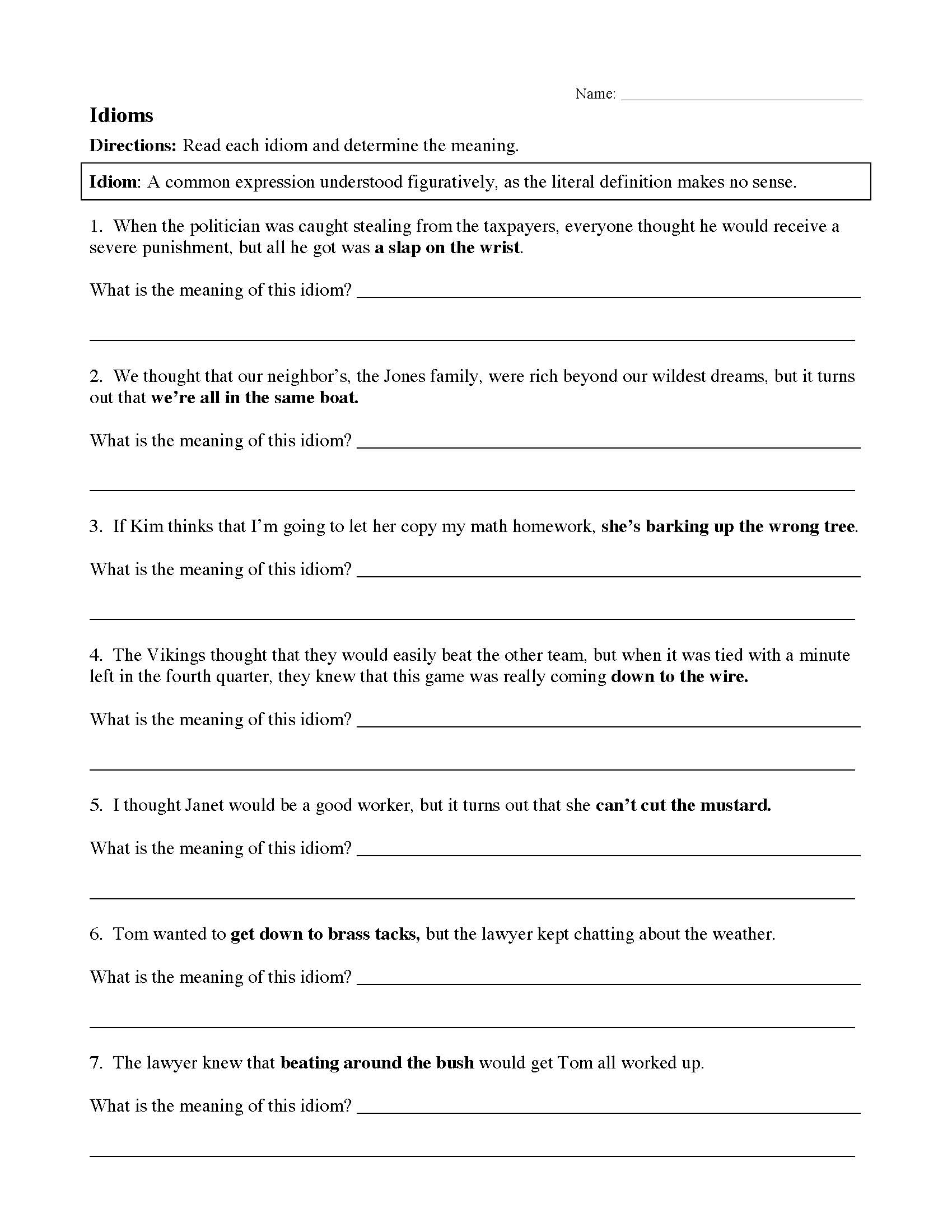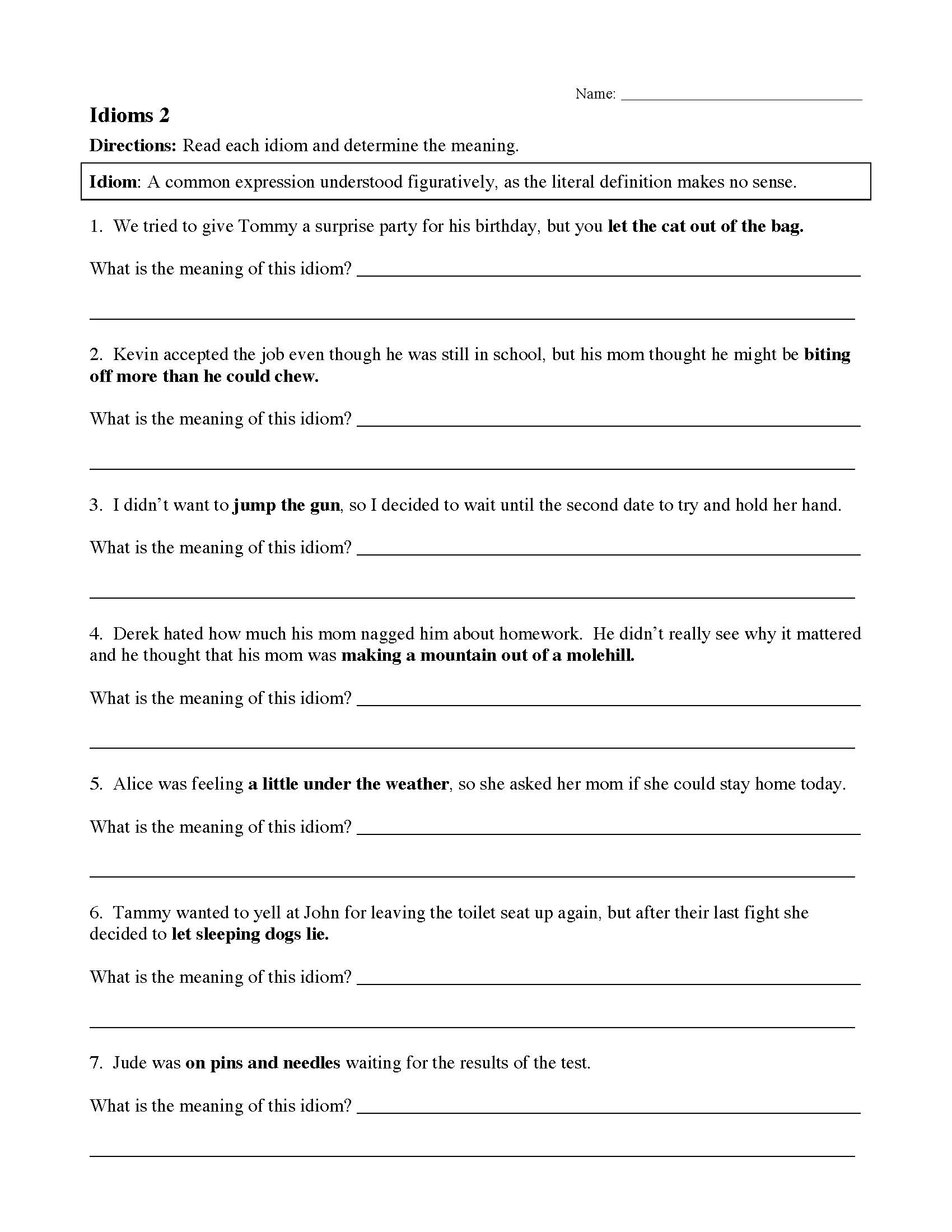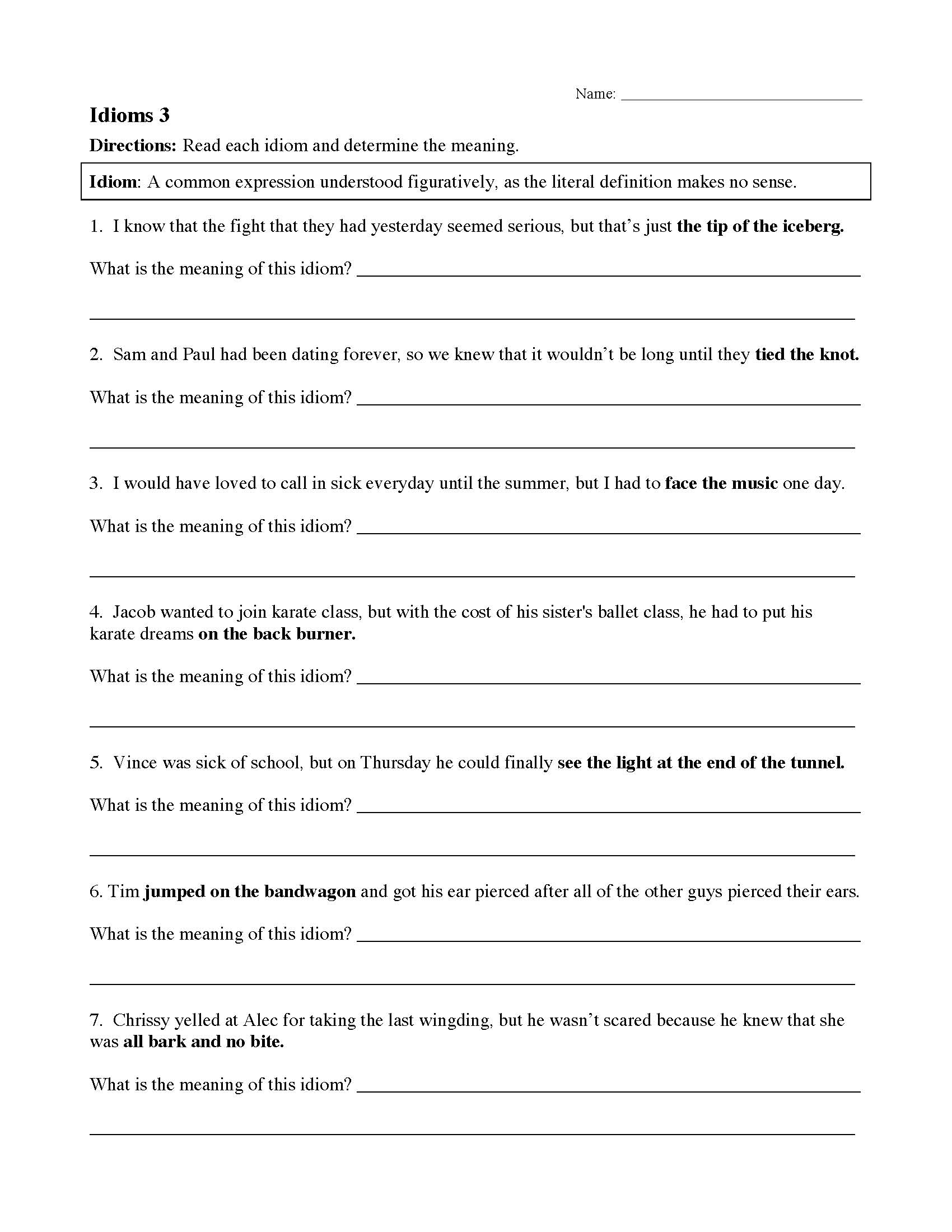
Students are often required to identify idioms on state tests, but what are idioms? It's hard to define them. This is because idioms are made from other figurative language techniques (like simile, metaphor, or hyperbole).
Figurative expressions that are very commonIdioms are different from other figurative language instances because people use idioms A LOT. Idioms are cliched figurative expressions. They have become part of the language as it is used. They are so common that many native speakers are unaware that they are using figurative language. Let's look at an example:
He's running out of steam.This figurative expressions is a metaphor. It compares the subject to a steam engine. But it's also an idiom. That's because the metaphor comparing steam to a person's energy is so common that it has become idiomatic. Native speakers don't have to bother to decode the metaphor. They know instantly what it means. Steam has become an idiomatic metaphor.
Many idioms are dated expressions. They may refer to technology that is less utilized today, like steam. This can make idioms challenging for young students to understand. Most of today's students do not understand the origins of the phrase "hang up the phone" yet alone the idiom "bought the farm." It is good to expose students to a wide range of idioms. This page contains tests, worksheets, and interactive activities to help your students master idioms.
Here are some idiom tests. Each test has 15 questions. Each question has a bolded idiom in a context-rich sentence. Students choose the best definition for each.
Idiom Test 1This idiom test will help you evaluate how well your students can determine the meaning of idioms based on context. It features 15 multiple-choice questions. Students read context-rich sentences and determine the meaning of each bolded idiom.






Here's another idiom test with 15 multiple choice questions. This one is a bit harder than Idiom Test 1, so level accordingly. Students read context-rich sentences and determine the meaning of each bolded idiom. Print, edit, or complete online!






Here are some idiom worksheets. The paper and printable versions of these worksheets are more open-ended than the idiom tests (above), which are multiple-choice. The online versions of these worksheets are pretty much the same.
Idiom Worksheet 1Here is an idiom worksheet with 15 commonly used expressions with which students may be unfamiliar. Students read each idiom and, based on the context of the sentence, determine the meaning of the expression.






Give your students more exposure to idioms with this cool worksheet. It has 15 more idioms used in context-rich sentences. Students determine the meaning of each expression based on usage.






Here is another worksheet with 15 examples of commonly used idioms. Students will gain exposure to idioms. They will determine the meaning of idioms based on the context of each sentence. This worksheet is great practice.





This worksheet features another 15 commonly used idioms. Students read each sentence and attempt to determine the meaning of the idiom based on its context. This worksheet provides great general reading practice as well as exposure to idioms.





Here is yet another idiom worksheet with 15 more problems. Students read the sentences and determine the meaning of the bolded phrase based on the context of the sentence. Then they explain their answers. This one is a little bit harder than some of the other idiom worksheets.





Here is still another idiom worksheet. This one has15 more problems with commonly used idioms bolded. Students determine the meaning of each based on the context.





Here is one more idiom worksheet to give students the practice that they need. These idioms are used in context-rich sentences. Students determine the meaning of each idiom. This one is a little bit harder than some of the others.





Here is a short PowerPoint slideshow teaching students to distinguish between facts and opinions. It also includes a 10 question practice activity at the end of the lesson.




R.4 - Interpret words and phrases as they are used in a text, including determining technical, connotative, and figurative meanings, and analyze how specific word choices shape meaning or tone.
RL.2.4 - Describe how words and phrases (e.g., regular beats, alliteration, rhymes, repeated lines) supply rhythm and meaning in a story, poem, or song.
RL.3.4 - Determine the meaning of words and phrases as they are used in a text, distinguishing literal from nonliteral language.
RL.4.4 - Determine the meaning of words and phrases as they are used in a text, including those that allude to significant characters found in mythology (e.g., Herculean).
RL.5.4 - Determine the meaning of words and phrases as they are used in a text, including figurative language such as metaphors and similes.
RL.6.4 - Determine the meaning of words and phrases as they are used in a text, including figurative and connotative meanings; analyze the impact of a specific word choice on meaning and tone.
RL.7.4 - Determine the meaning of words and phrases as they are used in a text, including figurative and connotative meanings; analyze the impact of rhymes and other repetitions of sounds (e.g., alliteration) on a specific verse or stanza of a poem or section of a story or drama.
RL.8.4 - Determine the meaning of words and phrases as they are used in a text, including figurative and connotative meanings; analyze the impact of specific word choices on meaning and tone, including analogies or allusions to other texts.
RL.9-10.4 - Determine the meaning of words and phrases as they are used in the text, including figurative and connotative meanings; analyze the cumulative impact of specific word choices on meaning and tone (e.g., how the language evokes a sense of time and place; how it sets a formal or informal tone).
RL.11-12.4 - Determine the meaning of words and phrases as they are used in the text, including figurative and connotative meanings; analyze the impact of specific word choices on meaning and tone, including words with multiple meanings or language that is particularly fresh, engaging, or beautiful. (Include Shakespeare as well as other authors.)
L.5 - Demonstrate understanding of figurative language, word relationships, and nuances in word meanings.
L.3.5a - Distinguish the literal and nonliteral meanings of words and phrases in context (e.g., take steps).
L.4.5 - Demonstrate understanding of figurative language, word relationships, and nuances in word meanings.
L.4.5a - Explain the meaning of simple similes and metaphors (e.g., as pretty as a picture) in context.
L.5.5a - Interpret figurative language, including similes and metaphors, in context.
L.6.5 - Demonstrate understanding of figurative language, word relationships, and nuances in word meanings.
L.6.5a - Interpret figures of speech (e.g., personification) in context.
L.7.5 - Demonstrate understanding of figurative language, word relationships, and nuances in word meanings.
L.7.5a - Interpret figures of speech (e.g., literary, biblical, and mythological allusions) in context.
L.8.5 - Demonstrate understanding of figurative language, word relationships, and nuances in word meanings.
L.8.5a - Interpret figures of speech (e.g. verbal irony, puns) in context.
L.9-10.5 - Demonstrate understanding of figurative language, word relationships, and nuances in word meanings.
L.11-12.5 - Demonstrate understanding of figurative language, word relationships, and nuances in word meanings.
L.11-12.5a - Interpret figures of speech (e.g., hyperbole, paradox) in context and analyze their role in the text.